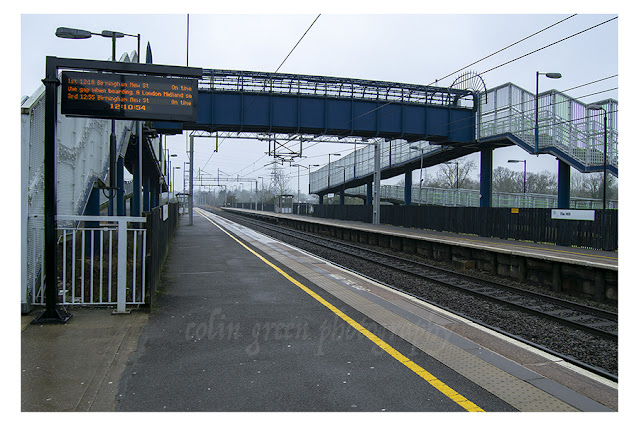Nestled amidst the picturesque landscapes near Coventry, West Midlands, lies Berkswell Railway Station. At first glance, it might appear to be a modest two-platform stop on the mighty West Coast Main Line. However, delve a little deeper, and you uncover a fascinating history, surprising connections, and a quiet significance that belies its humble appearance.
The images capture Berkswell on a somewhat overcast day, showcasing its functional, yet well-maintained, platforms. The presence of overhead lines is a clear indicator of its electrified status, and indeed, you can see modern trains like the Avanti West Coast Pendolino arriving and departing, a testament to its role on this crucial artery of the British rail network.
A Station with Evolving Identities
The story of Berkswell station begins in 1839 with the completion of the London and Birmingham Railway. Initially, the line passed by without a stop in this precise location. It wasn't until 1844 that the first station opened, known then as Dockers Lane. The name game began in January 1853, when it was rechristened Berkswell. Interestingly, in February 1928, it became "Berkswell and Balsall Common," acknowledging its closer proximity to the latter village. However, around 1959, as electrification works commenced on the line, the name reverted simply to Berkswell, a designation it has retained ever since. The electrification itself was a significant undertaking, finally completed in 1974, dramatically modernizing the line and the station's operational capabilities. The remodelling during this period likely shaped much of the station's current layout, as seen in the clear, uncluttered platforms and modern fencing.
Echoes of a Bygone Junction and Royal Connections
One of the most intriguing aspects of Berkswell's past is its role as a junction. Just south of the station, a line once branched off towards Kenilworth. This connection, operational from March 2, 1884, until March 3, 1969, is no longer in use, but the siding track where trains once ran is still visible. Today, this old line is being transformed into a greenway, offering a new lease of life to a piece of railway heritage.
Even more captivating are the stories associated with this very siding. It is known to occasionally house the Royal Train, and members of "the Firm" (the Royal Family) have reportedly spent nights onboard while parked here. Furthermore, history whispers that even Sir Winston Churchill himself is said to have overnighted in this quiet siding. These anecdotes lend a remarkable, almost secretive, air to Berkswell, hinting at its strategic utility beyond regular passenger services.
Modern Functionality and Passenger Flow
Looking at the station today, as depicted in the photos, it boasts two platforms, clearly marked, serving trains heading north towards Birmingham New Street and south to London Euston. The tracks are well-maintained, and the overhead electrification lines crisscross above, a constant reminder of the high-speed traffic that uses this route.
A notable upgrade to the station's infrastructure occurred in 2004 with the removal of a level crossing to the south of the platforms. This was a crucial development, replaced by a bridge, enabling the line to accommodate more high-speed trains safely and efficiently.
While Berkswell station offers minimal facilities, these are functional and meet the needs of its commuters. You can spot waiting shelters on both platforms and ticket machines, ensuring ease of access for passengers. There are no public toilets, but a car park is available for those arriving by road. The station is typically manned during selected hours, providing a human presence for assistance.
In terms of service, Berkswell enjoys a respectable two trains per hour in each direction, connecting it to two major urban centres. Before the global disruption of the Covid-19 pandemic, Berkswell saw significant passenger traffic, with 334,000 users recorded in the 2019/20 period. The pandemic, of course, had a dramatic impact, causing passenger numbers to plummet to just 52,916 in the first year of the virus. As travel patterns continue to normalize, it's expected that Berkswell will once again see its numbers rise, reaffirming its importance to the local communities of Berkswell and Balsall Common.
In conclusion, Berkswell Railway Station is more than just a stopping point on the map. It's a place where history intertwines with modern functionality, a quiet witness to the evolution of rail travel, and a surprising link to some of Britain's most prominent figures. Next time you're passing through, spare a thought for the stories held within its tracks and platforms.
Clicking any of the images below should open a link in another window to my Colin Green Photography store on Zazzle.
 |
| The siding that occasionally houses the Royal Train can be seen to the right of the mainline. This used to be the junction of the Kenilworth Line. |
Please take a moment to share this post, follow me on social media, and explore my work on Clickasnap and Photo4Me using the links below. Your support means a lot!
All the images remain the copyright of Colin Green.



















